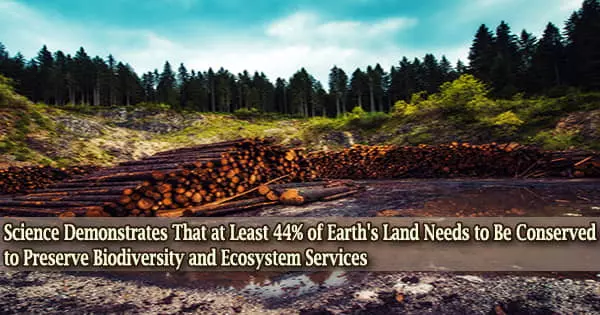According to recent research, 44 percent of the Earth’s surface area, or over 64 million square kilometers (24.7 million square miles), has to be conserved in order to protect biodiversity.
Dr. James R. Allan’s team from the University of Amsterdam employed cutting-edge geospatial algorithms to map the world’s best locations for protecting terrestrial species and ecosystems. To determine how much of this area will be at risk from habitation by 2030, they employed spatially detailed land-use scenarios.
“Our study is the current best estimate of how much land we must conserve to stop the biodiversity crisis it is essentially a conservation plan for the planet,” said lead author James Allan. “We must act fast, our models show that over 1.3 million km2 of this important land an area larger than South Africa is likely to have its habitat cleared for human uses by 2030, which would be devastating for wildlife.”
Since nations are presently negotiating a post-2020 global biodiversity framework under the Convention on Biological Diversity, with new biodiversity goals and targets that should go into force later this year, the work has significant policy implications.
Governments will be required to regularly report on their progress toward these goals, and this will shape the conservation agenda for at least the ensuing ten years.
“More than a decade ago, governments set a global target to conserve at least 17 percent of terrestrial areas through protected areas and other site-based approaches for improving the status of biodiversity and ecosystems,” explains co-author Dr. Kendall Jones, Conservation Planning Specialist at the Wildlife Conservation Society. “However, by 2020 it was clear that this was not enough for halting biodiversity declines and averting the biodiversity crisis.”
While this is a great step in the right direction, our study suggests that more ambitious goals and policies to maintain ecological integrity beyond this 30% target are crucial. If nations are serious about safeguarding biodiversity and ecosystem services that underpin life on Earth, then they need immediately to scale up their conservation efforts, not only in extent and intensity but also in effectiveness.
Dr. Kendall Jones
The goal of conserving 30% of a country’s territory through protected areas and other site-based methods is now a hot topic for 2030.
Added Jones: “While this is a great step in the right direction, our study suggests that more ambitious goals and policies to maintain ecological integrity beyond this 30% target are crucial. If nations are serious about safeguarding biodiversity and ecosystem services that underpin life on Earth, then they need immediately to scale up their conservation efforts, not only in extent and intensity but also in effectiveness.”
The study, according to the authors, provides crucial data for planning conservation and development efforts and can influence future national and international conservation agendas.
Additionally, they emphasized that not all of the identified land should be set aside as protected areas but rather should be managed through a variety of strategies for the conservation of species and ecosystems, such as effective area-based conservation measures and effective sustainable land-use policies when necessary.
“Conservation actions that promote the autonomy and self-determination of people living on this land, whilst also maintaining ecological integrity are crucial,” said Dr. Allan.
“We have many effective conservation tools available, from empowering Indigenous Peoples to manage their natural environment, through to policies that limit deforestation or provide sustainable livelihood options, and of course protected areas.”
















